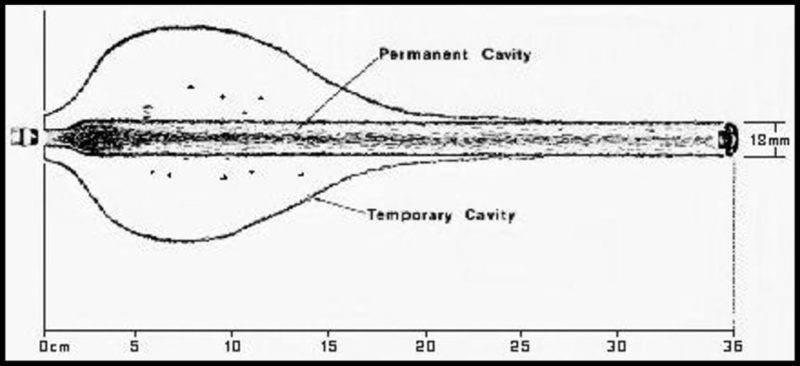Here is the related Jerry Miculek test video for those interested in a more comprehensive look:
And another test video:
Didnt know Jerry was a scientist?
There are two recent studies that were done on the affect of 50 BMG on humans. One by the NIH which showed overpressure affects on cerebral tissue and function. Good short read.
Background: Overpressure (OP) is an increase in air pressure above normal atmospheric levels. Military personnel are repeatedly exposed to low levels of OP caused by various weapon systems. Repeated OP may increase risk of neurological disease or ...

www.ncbi.nlm.nih.gov
The second by which was researched and published by Dr Andrew at the White Mountain Forensics lab is conclusive:
As the bullet enters the body it crushes and shreds tissue in its path – this creates a permanent cavity – the “bullet hole”. In addition, the energy of the impact is dissipated in a shock wave that radially flings surrounding tissue away from the path of the projectile, creating a cavity larger than the diameter of the bullet, this is the temporary stress cavity. The temporary stress cavity exists for around 5 to 10 milliseconds with a series of gradually smaller pulsations & contractions before the formation of a permanent wound track.
The ultimate extent of the wound is determined by the kinetic energy on impact, extent of the temporary cavity and the amount of bullet fragmentation.
.357 MAGNUM WOUND – Wound profiles by Martin Fackler *
When a 50 BMG bullet hits a human body, it can cause a permanent cavity, or "bullet hole", by shredding and crushing tissue in its path. The impact's energy also creates a shock wave that pushes surrounding tissue away from the bullet's path, forming a temporary cavity that's larger than the bullet's diameter. The amount of force a 50 BMG round can produce depends on the weapon it's fired from, the type of bullet and powder used, and can range from 10,000 to 15,000 foot-pounds force (14,000 to 20,000 J)
Energy and pressure waves from ALL PROJECTILES disrupting human and animals is ruled by kinetic energy and waves of pressure. A general rule - The larger and faster the projectile, the additive affect.




